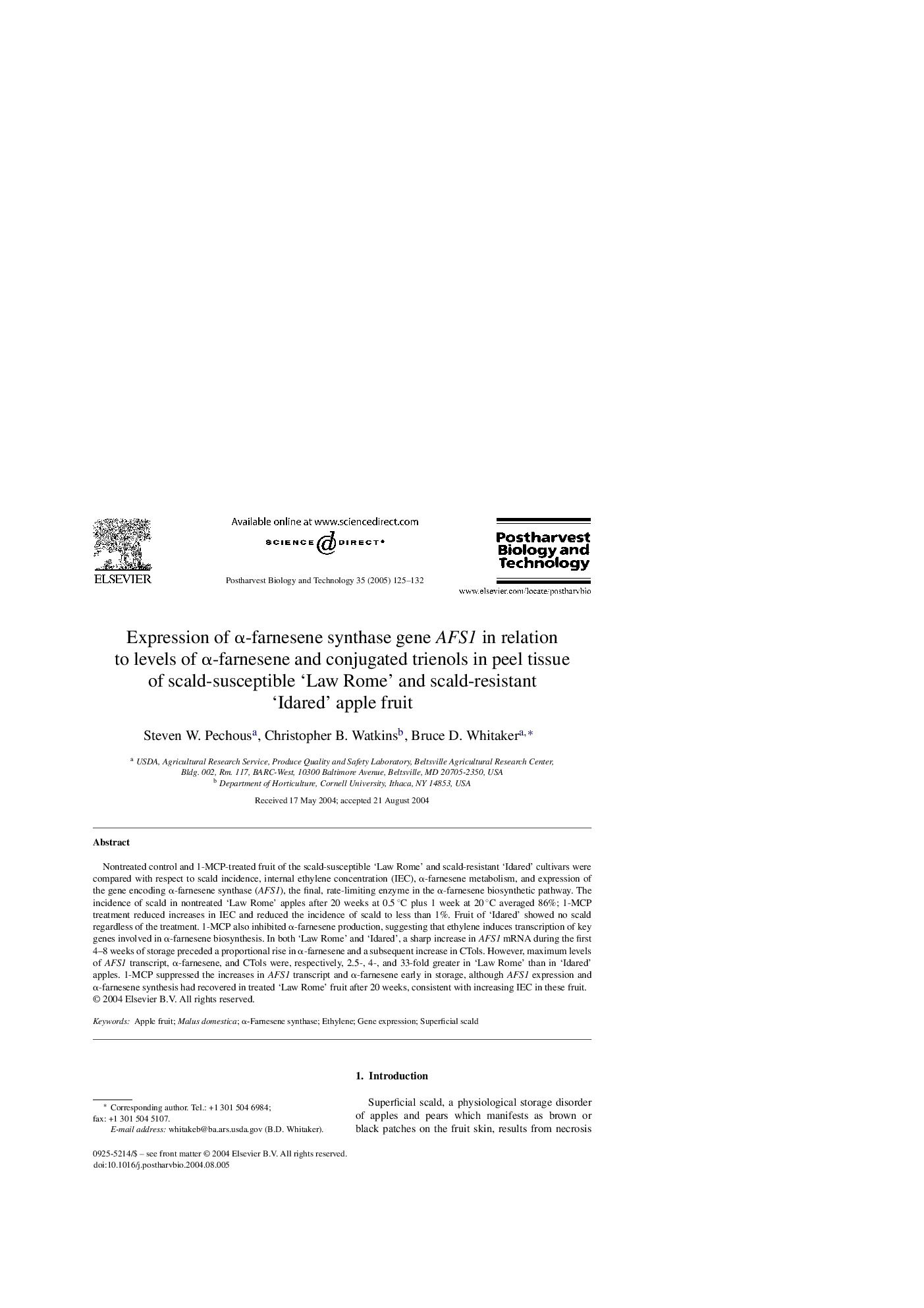| Article ID | Journal | Published Year | Pages | File Type |
|---|---|---|---|---|
| 9475325 | Postharvest Biology and Technology | 2005 | 8 Pages |
Abstract
Nontreated control and 1-MCP-treated fruit of the scald-susceptible 'Law Rome' and scald-resistant 'Idared' cultivars were compared with respect to scald incidence, internal ethylene concentration (IEC), α-farnesene metabolism, and expression of the gene encoding α-farnesene synthase (AFS1), the final, rate-limiting enzyme in the α-farnesene biosynthetic pathway. The incidence of scald in nontreated 'Law Rome' apples after 20 weeks at 0.5 °C plus 1 week at 20 °C averaged 86%; 1-MCP treatment reduced increases in IEC and reduced the incidence of scald to less than 1%. Fruit of 'Idared' showed no scald regardless of the treatment. 1-MCP also inhibited α-farnesene production, suggesting that ethylene induces transcription of key genes involved in α-farnesene biosynthesis. In both 'Law Rome' and 'Idared', a sharp increase in AFS1 mRNA during the first 4-8 weeks of storage preceded a proportional rise in α-farnesene and a subsequent increase in CTols. However, maximum levels of AFS1 transcript, α-farnesene, and CTols were, respectively, 2.5-, 4-, and 33-fold greater in 'Law Rome' than in 'Idared' apples. 1-MCP suppressed the increases in AFS1 transcript and α-farnesene early in storage, although AFS1 expression and α-farnesene synthesis had recovered in treated 'Law Rome' fruit after 20 weeks, consistent with increasing IEC in these fruit.
Related Topics
Life Sciences
Agricultural and Biological Sciences
Agronomy and Crop Science
Authors
Steven W. Pechous, Christopher B. Watkins, Bruce D. Whitaker,
